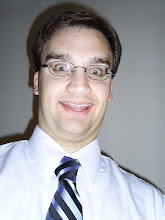Project MKULTRA, or MK-ULTRA, was the code name for a covert, illegal CIA human research program, run by the Office of Scientific Intelligence. This official U.S. government program began in the early 1950s, continuing at least through the late 1960s, and it used U.S. and Canadian citizens as its test subjects. The published evidence indicates that Project MKULTRA involved the use of many methodologies to manipulate individual mental states and alter brain functions, including the surreptitious administration of drugs and other chemicals, sensory deprivation, isolation, and verbal and sexual abuse.
Once Project MKULTRA officially got underway in April, 1953, experiments included administering LSD to CIA employees, military personnel, doctors, other government agents, prostitutes, mentally ill patients, and members of the general public in order to study their reactions. LSD and other drugs were usually administered without the subject's knowledge or informed consent, a violation of the Nuremberg Code that the U.S. agreed to follow after World War II.
The Deputy Director of the CIA revealed that over thirty universities and institutions were involved in an "extensive testing and experimentation" program which included covert drug tests on unwitting citizens "at all social levels, high and low, native Americans and foreign." Several of these tests involved the administration of LSD to "unwitting subjects in social situations." At least one death, that of Dr. Olson, resulted from these activities. The Agency itself acknowledged that these tests made little scientific sense. The agents doing the monitoring were not qualified scientific observers.
From: http://en.wikipedia.org/wiki/MKULTRA
Also see a related article on Operation Midnight Climax which I did an article on back in March of 2010:
http://weirdweeklywiki.blogspot.com/2010/03/operation-midnight-climax-operation.html
Tusko
Experiments with LSD have also been done on animals; in 1962, an elephant named Tusko died shortly after being injected with 297 mg, but whether the LSD was the cause of his death is controversial (due, in part, to a plethora of other chemical substances administered simultaneously).
From: http://en.wikipedia.org/wiki/Lysergic_acid_diethylamide
Cary Grant
On December 25, 1949, Grant married Betsy Drake. He appeared with her in two films. This would prove to be his longest marriage, ending on August 14, 1962. Drake introduced Grant to LSD, and in the early 1960s he related how treatment with the hallucinogenic drug —legal at the time— at a prestigious California clinic had finally brought him inner peace after yoga, hypnotism, and mysticism had proved ineffective. The couple divorced in 1962.
From: http://en.wikipedia.org/wiki/Cary_Grant
Dock Ellis
Dock Phillip Ellis, Jr. was a professional baseball player who pitched for the Pittsburgh Pirates, among other teams in Major League Baseball. His best season was 1971, when he won 19 games for the World Series champion Pirates and was the starting pitcher for the National League in the All-Star Game. However, he is perhaps best remembered for throwing a no-hitter in 1970 and later stating that he had done it while under the influence of LSD.
From: http://en.wikipedia.org/wiki/Dock_Ellis
Flipper (1963)
One "stunt" dolphin (one of several used in the film) is speared on screen in the peduncle. This is an actual spear-gunning of a live dolphin, not a special effect, which the producers could not afford. The dolphin appears in several subsequent scenes with Luke and the actress playing his mother, having "beached" itself with the spear still sticking out of its tail.
The unnamed dolphin survived this abuse. Producer Ivan Tors gave it to Dr. John C. Lilly, then of the Communication Research Institute in Miami. "It wouldn't come near us," Lilly later said. "I gave it 100 micrograms of LSD, and it was all over us." Tors told Lilly that the dolphin had been speared "by mistake" and that the scene was shot by a second unit without his direct knowledge. Lilly is credited in the film as "scientific adviser".
From: http://en.wikipedia.org/wiki/Flipper_(1963_film)














